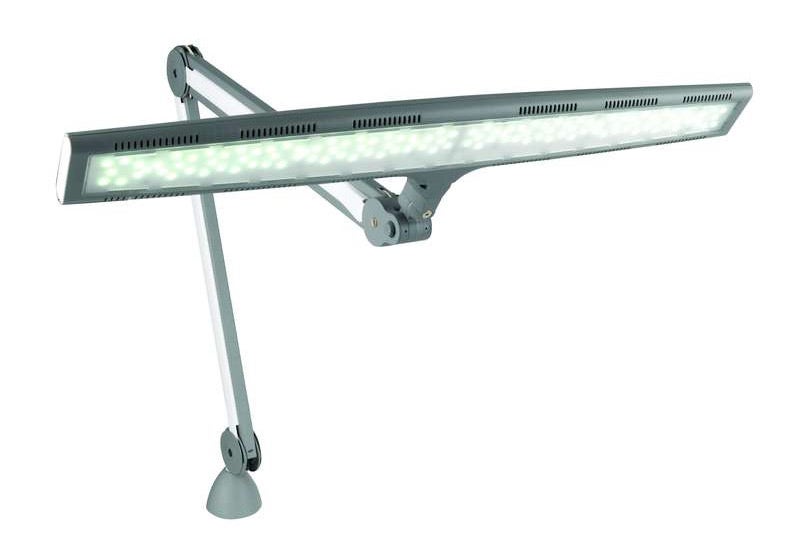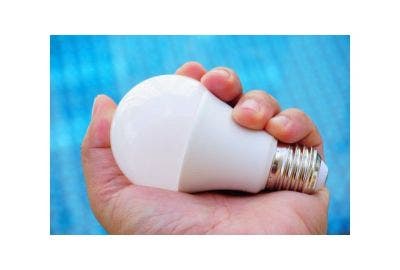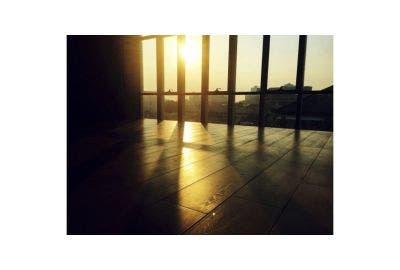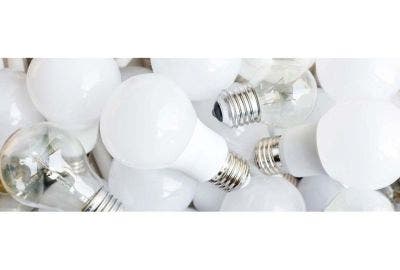Are you looking for the perfect light for your office? Or maybe you are a photographer requiring natural-looking light to bring the right contrast to your pictures. Whatever your reason for searching for the differences between daylight lighting and bi-colour lights, the information in this blog should help you to decide the right choice for you.
What Is A Bi-Colour Light?

A bi-colour light is an LED light that provides different colour temperatures to complement the existing light in a particular space, or to adjust the light to help create the desired mood for photographs.
Bi-colour lights can be adjusted by selecting a:
- Colour temperature between 3200K and 5600K (degrees of Kelvin).
- Middle range colour temperature, i.e., 4300K (degrees of Kelvin).
- Full range of colour temperatures that are from the entire spectrum of the Kelvin scale.
The versatility of bi-colour lights allows photographers to alter the environment’s light without the use of colour temperature correction gels.
The main gels that are used are colour temperature blue (CTB) and colour temperature orange (CTO), which are changed according to the environment’s light and the mood the photographer wishes to create; however, there is no need for gels with bi-colour lights, which allows them to adjust the light colours faster.
Equally, if light fixtures are out of reach, the versatility of bi-colour lights will allow a photographer to adjust the lighting without the need to get to the fixtures.
What Is A Daylight Light?

Daylight lighting provides natural light that mimics daylight, at any time of the day. This type of LED lamp has many benefits.
For example, an office that has no windows would benefit from a daylight desk lamp or daylight floor lamp since it would bring natural-looking light to the room.
Additionally, a daylight desk lamp would help to prevent office workers from experiencing eye issues. This is because the blue light of computer screens and mobile phones can cause a person’s eyes to strain, but the natural light from a daylight bulb provides the relief needed, which helps to reduce eye strain.
But what exactly is daylight lighting?
Daylight lighting has a single colour temperature, which is typically 5600K, and because it is a single colour, daylight lighting produces a high light output. This means that the light appears brighter and covers more area than other light sources that use different colour temperatures.
When Is Daylight Lighting Used?
Daylight lighting benefits photographers and office workers, but it also has many other uses.
Daylight lighting can be used:
To Illuminate A Room For Health Benefits
LED lights that mimic daylight, such as daylight table lamps, that provide a natural-looking hue and natural-feeling intensity of sunlight, are believed to help our circadian rhythm. These are physical, mental, and behavioural changes that occur within 24 hours, which involve our sleeping patterns, our diet, and the amount of light we should expose ourselves to daily to help reduce depression and increase vigilance.
For Product Testing
Some product testing, such as sunscreen testing, requires artificial sunlight. Most tests need to be conducted indoors, so lamps that mimic daylight are essential to help create a natural environment. This is also the same within the automotive industry when testing the reliability and functionality of systems.
As Aquarium Lighting
Depending on the aquarium, different lighting will be required. For example, certain types of corals in a reef aquarium need light that simulates daybreak and sunset as well as the lunar phases. Additionally, certain animals benefit from this type of lighting.
As previously mentioned, a single-colour light, such as a daylight lamp, produces a high output of light, which can assist office workers and photographers in their jobs. Daylight lamps can also help people who are carrying out other tasks where good light is essential, such as sewing, painting and jobs where colour matching is required.
If you are looking for the best daylight lamp for sewing in the UK, then you may want to consider purchasing a daylight magnifying lamp from Heamar.
These magnifying lamps are also ideal for electronic and medical professionals.
Advantages of Daylight Lights:
There are many benefits of daylight lamps, some of which we have already covered in this blog. These include:
- A Higher Light Output - Regardless of whether it is a daylight lamp or not, single-colour lights provide 25% to 50% more brightness than bi-colour lights.
- Simulates Natural Lighting - To support circadian rhythms, Daylight therapy lights can simulate the effects of sunlight, which is particularly useful for people who aren’t exposed to much daylight.
- Colours Can Be Altered - Although daylight lighting has only one colour temperature, there are gels available to alter the colours, which is particularly useful for photographers/videographers.
- Less Expensive - Daylight lamps are less costly compared to bi-colour lights, which is mainly due to there being fewer components.
Advantages of Bi-Colour Lights:
The benefits of bi-colour lights include:
- Versatility - Because there are more colour temperatures available with a bi-colour light there is more versatility. For example, a photographer can accurately adjust the colour temperature of the light, according to their environment and other light sources present.
- Long battery life - Bi-colour lights tend to use fewer LEDs compared to single-colour lights, which can contribute to their batteries having a longer lifespan.
- Efficiency - With there being no need for colour temperature correction gels, bi-colour lights allow for efficiency, particularly for photographers shooting in an uncontrolled environment. In this case, they can work at speed and adjust the colour temperature according to the light.
To conclude, a daylight lamp or bi-colour light can both serve the same purpose, but which will be most effective depends on the environment or the task that the lighting is required for.
In this blog, we mentioned that bi-colour lights are useful in uncontrolled environments; however, in a controlled environment, such as your home/studio, you may benefit more from a single-colour light, such as a daylight lamp, since the light output is higher and the flexibility of a bi-colour light is not necessary.
Additionally, in bi-colour lights, the CRI (Colour Rendering Index) value is low, which can negatively affect colours, particularly skin tones in photographs.
Overall, there are many benefits of daylight lighting and they can serve multiple purposes, whether that be to provide natural light for a photo shoot or to simulate sunlight to support positive health and well-being.
Heamar has an extensive range of daylight lamps and fixtures, all of which have a diverse variety of uses. For example, our Daylight Light Boxes are perfect for spreading an even light over calligraphy, sketches, and embroidery.
For more lights and lamps, see what Heamar has to offer.
























